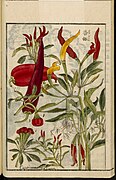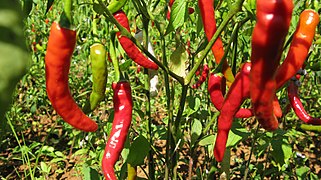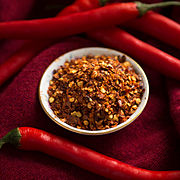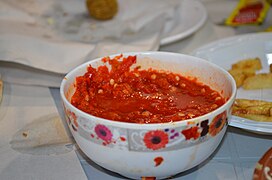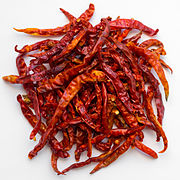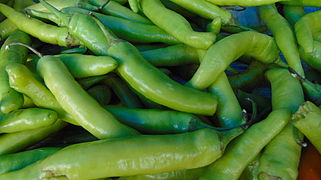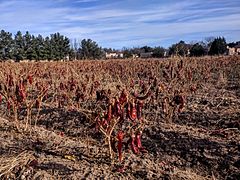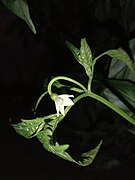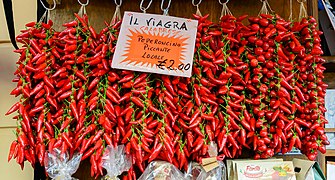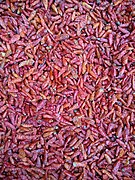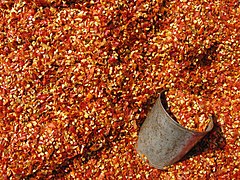Utilizator:WikiUser70176/Ardei iute
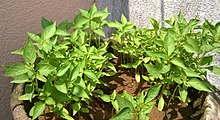
Ardei iute, de asemenea, spelt chile sau chilli [1] ( din limba nci: Format:Wikt-lang [ ˈt͡ʃiːlːi ] ⓘ</link></link> ), sunt soiuri de fructe de pădure ale plantelor din genul Capsicum, care fac parte din familia solanaceelor, cultivate pentru picantența lor. [2] Ardeii iute sunt folosiți pe scară largă în multe bucătării ca un condiment pentru a adăuga „căldură” mâncărurilor. Capsaicina și compușii înrudiți cunoscuți sub numele de capsaicinoizi sunt substanțele care conferă ardeiului iute intensitatea atunci când sunt ingerate sau aplicate local . Ardeii iute prezintă o gamă largă de căldură și arome. Această diversitate este motivul din spatele disponibilității diferitelor tipuri de boia de ardei și pudră de chili, fiecare oferind propriul gust și nivelul de căldură. [3] xx xxx x x x xxxxxxxx xxx xxxxx.xx xxxxx xxxxxxxxxx xxxxxxxxx x xxxxxxxxxx.x xxxxxxxxxx xxxxxxxxxxxxx x x xx xxxxxx x xxx xxxxxxxxx xxxxxxxxx xxxxxxx xxxx xxxxxx xxxx xxxxx xxxxx xxxxxx xxxx xxxx xxxxxx xxxxx xxxxx xxxxxxx xxxx xxxxx xxxxxxx xxx x x x xxxxxxxx xxx xxxxx.xx xxxxx xxxxxxxxxx xxxxxxxxx x xxxxxxxxxx.x xxxxxxxxxx xxxxxxxxxxxxx x x xx xxxxxx x xxx xxxxxxxxx xxxxxxxxx xxxxxxx xxxx xxxxxx xxxx xxxxx xxxxx xxxxxx xxxx xxxx xxxxxx xxxxx xxxxx xxxxxxx xxxx xxxxx xxxxxxx xxx x x x xxxxxxxx xxx
Se crede că ardeii iute ar fi provenit din America Centrală sau de Sud [4] [5] [6] și au fost cultivați pentru prima dată în Mexic. [7] Exploratorii europeni au adus ardeii iute înapoi în Lumea Veche la sfârșitul secolului al XVI-lea, ca parte a schimbului colombian, ceea ce a condus la răspândirea multor soiuri în întreaga lume și la găsirea utilizării atât în alimentație, cât și în medicina tradițională . Acest lucru a condus la o varietate de soiuri, inclusiv specia annuum, cu soiul său <i id="mwOQ">glabriusculum</i> și grupul de soiuri din New Mexico și speciile de baccatum, chinense, frutescens și pubescens .xx xxx x x x xxxxxxxx xxx xxxxx.xx xxxxx xxxxxxxxxx xxxxxxxxx x xxxxxxxxxx.x xxxxxxxxxx xxxxxxxxxxxxx x x xx xxxxxx x xxx xxxxxxxxx xxxxxxxxx xxxxxxx xxxx xxxxxx xxxx xxxxx xxxxx xxxxxx xxxx xxxx xxxxxx xxxxx xxxxx xxxxxxx xxxx xxxxx xxxxxxx xxx x x x xxxxxxxx xxx xxxxx.xx xxxxx xxxxxxxxxx xxxxxxxxx x xxxxxxxxxx.x xxxxxxxxxx xxxxxxxxxxxxx x x xx xxxxxx x xxx xxxxxxxxx xxxxxxxxx xxxxxxx xxxx xxxxxx xxxx xxxxx xxxxx xxxxxx xxxx xxxx xxxxxx xxxxx xxxxx xxxxxxx xxxx xxxxx xxxxxxx xxx x x x xxxxxxxx xxx
Cultivarurile cultivate în America de Nord și Europa se crede că derivă din Capsicum annuum și au fructe albe, galbene, roșii sau violet până la negre. În 2019, producția mondială de ardei iute verde crud s-a ridicat la 38 de milioane de tone, China producând jumătate. [8]xx xxx x x x xxxxxxxx xxx xxxxx.xx xxxxx xxxxxxxxxx xxxxxxxxx x xxxxxxxxxx.x xxxxxxxxxx xxxxxxxxxxxxx x x xx xxxxxx x xxx xxxxxxxxx xxxxxxxxx xxxxxxx xxxx xxxxxx xxxx xxxxx xxxxx xxxxxx xxxx xxxx xxxxxx xxxxx xxxxx xxxxxxx xxxx xxxxx xxxxxxx xxx x x x xxxxxxxx xxx xxxxx.xx xxxxx xxxxxxxxxx xxxxxxxxx x xxxxxxxxxx.x xxxxxxxxxx xxxxxxxxxxxxx x x xx xxxxxx x xxx xxxxxxxxx xxxxxxxxx xxxxxxx xxxx xxxxxx xxxx xxxxx xxxxx xxxxxx xxxx xxxx xxxxxx xxxxx xxxxx xxxxxxx xxxx xxxxx xxxxxxx xxx x x x xxxxxxxx xxx
Istorie
Plantele de ardei capsicum își au originea în Peru și Bolivia modern și au făcut parte din dietele umane din aproximativ 7.500 î.Hr. [5] [9] Sunt una dintre cele mai vechi culturi cultivate din America. [9] Originile cultivării ardeiului iute au fost urmărite în centrul-estul Mexicului în urmă cu aproximativ 6.000 de ani, [7] [10] deși, conform cercetătorilor de la Universitatea din California Berkeley în 2014, plantele de ardei iute au fost cultivate pentru prima dată independent în diferite locații din America. inclusiv zonele montane Peru și Bolivia, centrul Mexicului și Amazonul . [6] Au fost una dintre primele culturi auto-polenizate cultivate în Mexic, America Centrală [11] și părți din America de Sud. [9]xx xxx x x x xxxxxxxx xxx xxxxx.xx xxxxx xxxxxxxxxx xxxxxxxxx x xxxxxxxxxx.x xxxxxxxxxx xxxxxxxxxxxxx x x xx xxxxxx x xxx xxxxxxxxx xxxxxxxxx xxxxxxx xxxx xxxxxx xxxx xxxxx xxxxx xxxxxx xxxx xxxx xxxxxx xxxxx xxxxx xxxxxxx xxxx xxxxx xxxxxxx xxx x x x xxxxxxxx xxx xxxxx.xx xxxxx xxxxxxxxxx xxxxxxxxx x xxxxxxxxxx.x xxxxxxxxxx xxxxxxxxxxxxx x x xx xxxxxx x xxx xxxxxxxxx xxxxxxxxx xxxxxxx xxxx xxxxxx xxxx xxxxx xxxxx xxxxxx xxxx xxxx xxxxxx xxxxx xxxxx xxxxxxx xxxx xxxxx xxxxxxx xxx x x x xxxxxxxx xxx
Peru are cea mai mare varietate de capsicum cultivat, deoarece este un centru de diversificare în care au fost introduse, cultivate și consumate soiurile tuturor celor cinci specii domestice în vremurile precolumbiene. [12] Cea mai mare diversitate de ardei Capsicum sălbatic este consumată în Bolivia. Consumatorii bolivieni disting două forme de bază: ulupicas, specii cu fructe rotunde mici, inclusiv C. eximium, C. cardenasii, C. eshbaughii și C. caballeroi ; și arivivis cu fructe mici alungite inclusiv C. baccatum var. soiurile baccatum și C. chacoense . [12]xx xxx x x x xxxxxxxx xxx xxxxx.xx xxxxx xxxxxxxxxx xxxxxxxxx x xxxxxxxxxx.x xxxxxxxxxx xxxxxxxxxxxxx x x xx xxxxxx x xxx xxxxxxxxx xxxxxxxxx xxxxxxx xxxx xxxxxx xxxx xxxxx xxxxx xxxxxx xxxx xxxx xxxxxx xxxxx xxxxx xxxxxxx xxxx xxxxx xxxxxxx xxx x x x xxxxxxxx xxx xxxxx.xx xxxxx xxxxxxxxxx xxxxxxxxx x xxxxxxxxxx.x xxxxxxxxxx xxxxxxxxxxxxx x x xx xxxxxx x xxx xxxxxxxxx xxxxxxxxx xxxxxxx xxxx xxxxxx xxxx xxxxx xxxxx xxxxxx xxxx xxxx xxxxxx xxxxx xxxxx xxxxxxx xxxx xxxxx xxxxxxx xxx x x x xxxxxxxx xxx
Distribuție în Europa
Când Cristofor Columb și echipajul său au ajuns în Caraibe, au fost primii europeni care au întâlnit Capsicum. Le-au numit „ardei” pentru că, la fel ca ardeiul negru din genul Piper cunoscut în Europa, au un gust picant, iute, spre deosebire de alte alimente. [13] Chilis au fost aduse pentru prima dată înapoi în Europa de spanioli, apărând în înregistrările spaniole până în 1493. Spre deosebire de vițele de ardei din genul Piper care cresc la tropice, chilis-ul ar putea fi cultivat în climat temperat . Până la mijlocul anilor 1500, acestea deveniseră o plantă obișnuită de grădină în Spania și au fost încorporate în numeroase feluri de mâncare. Au apărut și în Italia în 1526, în Germania în 1543 și în Balcani în 1569, unde a fost transformat în boia . [14] [15]xx xxx x x x xxxxxxxx xxx xxxxx.xx xxxxx xxxxxxxxxx xxxxxxxxx x xxxxxxxxxx.x xxxxxxxxxx xxxxxxxxxxxxx x x xx xxxxxx x xxx xxxxxxxxx xxxxxxxxx xxxxxxx xxxx xxxxxx xxxx xxxxx xxxxx xxxxxx xxxx xxxx xxxxxx xxxxx xxxxx xxxxxxx xxxx xxxxx xxxxxxx xxx x x x xxxxxxxx xxx xxxxx.xx xxxxx xxxxxxxxxx xxxxxxxxx x xxxxxxxxxx.x xxxxxxxxxx xxxxxxxxxxxxx x x xx xxxxxx x xxx xxxxxxxxx xxxxxxxxx xxxxxxx xxxx xxxxxx xxxx xxxxx xxxxx xxxxxx xxxx xxxx xxxxxx xxxxx xxxxx xxxxxxx xxxx xxxxx xxxxxxx xxx x x x xxxxxxxx xxx
Distribuție în restul lumii
Introducerea rapidă a chilis în Africa și Asia a fost probabil prin comercianții portughezi și spanioli în secolul al XVI-lea, deși detaliile nu sunt înregistrate. Portughezii l-au introdus mai întâi în Africa și Arabia, apoi în coloniile și punctele lor comerciale din Asia, inclusiv Goa, Sri Lanka și Malacca . De acolo, s-a răspândit în regiunile învecinate din Asia de Sud și vestul Asiei de Sud-Est prin comerțul local și răspândirea naturală. Aproximativ în același timp, spaniolii au introdus chilis și în Filipine, unde s-a răspândit în Melanezia, Micronezia și alte insule din Pacific prin monopolul lor asupra galeonilor Manila . Răspândirea lor în Asia de Est la sfârșitul secolului al XVI-lea este mai puțin clară, dar probabil a fost și prin comerțul local sau prin porturile comerciale portugheze și spaniole din Canton, China și Nagasaki, Japonia. [16] [14] [17] [15] [18] [19]xx xxx x x x xxxxxxxx xxx xxxxx.xx xxxxx xxxxxxxxxx xxxxxxxxx x xxxxxxxxxx.x xxxxxxxxxx xxxxxxxxxxxxx x x xx xxxxxx x xxx xxxxxxxxx xxxxxxxxx xxxxxxx xxxx xxxxxx xxxx xxxxx xxxxx xxxxxx xxxx xxxx xxxxxx xxxxx xxxxx xxxxxxx xxxx xxxxx xxxxxxx xxx x x x xxxxxxxx xxx xxxxx.xx xxxxx xxxxxxxxxx xxxxxxxxx x xxxxxxxxxx.x xxxxxxxxxx xxxxxxxxxxxxx x x xx xxxxxx x xxx xxxxxxxxx xxxxxxxxx xxxxxxx xxxx xxxxxx xxxx xxxxx xxxxx xxxxxx xxxx xxxx xxxxxx xxxxx xxxxx xxxxxxx xxxx xxxxx xxxxxxx xxx x x x xxxxxxxx xxx
Productie
| Regiune | (Milioane de </br> tone ) |
|---|---|
 China</img> China</img> China China | 16.7 |
 Mexic</img> Mexic</img> Mexic Mexic | 2.8 |
 Indonezia</img> Indonezia</img> Indonezia Indonezia | 2.8 |
 Turcia</img> Turcia</img> Turcia Turcia | 2.6 |
 Spania</img> Spania</img> Spania Spania | 1.5 |
| Lume | 36.1 |
| Sursa: FAOSTAT al Națiunilor Unite [20] | |
În 2020, 36 de milioane de tone de ardei iute și ardei verzi (considerați ca orice fructe Capsicum sau Pimenta ) au fost produse la nivel mondial, China producând 46% din total. [20]xx xxx x x x xxxxxxxx xxx xxxxx.xx xxxxx xxxxxxxxxx xxxxxxxxx x xxxxxxxxxx.x xxxxxxxxxx xxxxxxxxxxxxx x x xx xxxxxx x xxx xxxxxxxxx xxxxxxxxx xxxxxxx xxxx xxxxxx xxxx xxxxx xxxxx xxxxxx xxxx xxxx xxxxxx xxxxx xxxxx xxxxxxx xxxx xxxxx xxxxxxx xxx x x x xxxxxxxx xxx xxxxx.xx xxxxx xxxxxxxxxx xxxxxxxxx x xxxxxxxxxx.x xxxxxxxxxx xxxxxxxxxxxxx x x xx xxxxxx x xxx xxxxxxxxx xxxxxxxxx xxxxxxx xxxx xxxxxx xxxx xxxxx xxxxx xxxxxx xxxx xxxx xxxxxx xxxxx xxxxx xxxxxxx xxxx xxxxx xxxxxxx xxx x x x xxxxxxxx xxx
Specii și soiuri


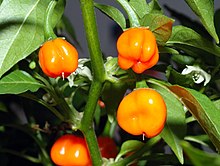
Există cinci specii domestice de ardei iute:
- Capsicum annuum include multe soiuri comune, cum ar fi ardei gras, ceară, cayenne, jalapeños, ardei thailandez, chiltepin și toate formele de chile din New Mexico .
- Capsicum frutescens include tabasco, malagueta, labuyo, piri piri și kambuzi .
- Capsicum chinense include cei mai tari ardei, cum ar fi naga, habanero, datil și scotch bonnet .
- Capsicum pubescens include ardeii rocoto sud-americani.
- Capsicum baccatum include ardeii aji sud-americani. [21]
Deși există doar câteva specii utilizate în mod obișnuit, există multe soiuri și metode de preparare a ardeiului iute care au denumiri diferite pentru uz culinar. Ardeii gras verzi și roșii, de exemplu, sunt același soi de C. annuum . Ardeii necoapți sunt verzi (deși au fost crescuți ardeii care nu devin roșii la maturare). În aceeași specie se află jalapeño, poblano (care, atunci când este uscat, este denumit ancho), New Mexico, serrano și alte soiuri. </link>[ <span title="This claim needs references to reliable sources. (August 2022)">necesită citare</span> ]xx xxx x x x xxxxxxxx xxx xxxxx.xx xxxxx xxxxxxxxxx xxxxxxxxx x xxxxxxxxxx.x xxxxxxxxxx xxxxxxxxxxxxx x x xx xxxxxx x xxx xxxxxxxxx xxxxxxxxx xxxxxxx xxxx xxxxxx xxxx xxxxx xxxxx xxxxxx xxxx xxxx xxxxxx xxxxx xxxxx xxxxxxx xxxx xxxxx xxxxxxx xxx x x x xxxxxxxx xxx xxxxx.xx xxxxx xxxxxxxxxx xxxxxxxxx x xxxxxxxxxx.x xxxxxxxxxx xxxxxxxxxxxxx x x xx xxxxxx x xxx xxxxxxxxx xxxxxxxxx xxxxxxx xxxx xxxxxx xxxx xxxxx xxxxx xxxxxx xxxx xxxx xxxxxx xxxxx xxxxx xxxxxxx xxxx xxxxx xxxxxxx xxx x x x xxxxxxxx xxx
Ardeii sunt de obicei împărțiți în două grupe: ardei gras (Marea Britanie: ardei dulci) și ardei iute. Cele mai populare soiuri de ardei sunt considerate ca se încadrează într-una dintre aceste categorii sau o încrucișare între ele. </link>[ <span title="This claim needs references to reliable sources. (August 2022)">necesită citare</span> ]xx xxx x x x xxxxxxxx xxx xxxxx.xx xxxxx xxxxxxxxxx xxxxxxxxx x xxxxxxxxxx.x xxxxxxxxxx xxxxxxxxxxxxx x x xx xxxxxx x xxx xxxxxxxxx xxxxxxxxx xxxxxxx xxxx xxxxxx xxxx xxxxx xxxxx xxxxxx xxxx xxxx xxxxxx xxxxx xxxxx xxxxxxx xxxx xxxxx xxxxxxx xxx x x x xxxxxxxx xxx xxxxx.xx xxxxx xxxxxxxxxx xxxxxxxxx x xxxxxxxxxx.x xxxxxxxxxx xxxxxxxxxxxxx x x xx xxxxxx x xxx xxxxxxxxx xxxxxxxxx xxxxxxx xxxx xxxxxx xxxx xxxxx xxxxx xxxxxx xxxx xxxx xxxxxx xxxxx xxxxx xxxxxxx xxxx xxxxx xxxxxxx xxx x x x xxxxxxxx xxx
Intensitate
Substanțele care conferă ardeiului iute ( căldură picant) atunci când sunt ingerate sau aplicate local sunt capsaicina (8-metil- N -vanilil-6-nonenamida) și câteva substanțe chimice înrudite, numite colectiv capsaicinoizi . [22] [23] Cantitatea de capsaicină variază în funcție de soi și depinde de condițiile de creștere. Ardeii stresați de apă produc de obicei păstăi mai puternice. Când o plantă de habanero este stresată, prin absorbția scăzută a apei de exemplu, concentrația de capsaicină crește în unele părți ale fructului. [24]xx xxx x x x xxxxxxxx xxx xxxxx.xx xxxxx xxxxxxxxxx xxxxxxxxx x xxxxxxxxxx.x xxxxxxxxxx xxxxxxxxxxxxx x x xx xxxxxx x xxx xxxxxxxxx xxxxxxxxx xxxxxxx xxxx xxxxxx xxxx xxxxx xxxxx xxxxxx xxxx xxxx xxxxxx xxxxx xxxxx xxxxxxx xxxx xxxxx xxxxxxx xxx x x x xxxxxxxx xxx xxxxx.xx xxxxx xxxxxxxxxx xxxxxxxxx x xxxxxxxxxx.x xxxxxxxxxx xxxxxxxxxxxxx x x xx xxxxxx x xxx xxxxxxxxx xxxxxxxxx xxxxxxx xxxx xxxxxx xxxx xxxxx xxxxx xxxxxx xxxx xxxx xxxxxx xxxxx xxxxx xxxxxxx xxxx xxxxx xxxxxxx xxx x x x xxxxxxxx xxx
Atunci când ardeii sunt consumați de mamifere, cum ar fi oamenii, capsaicina se leagă de receptorii durerii din gură și gât, potențial evocând durere prin relee spinale către trunchiul cerebral și talamus, unde sunt percepute căldura și disconfortul. [25] Cu toate acestea, păsările nu pot percepe iute și astfel pot mânca unii dintre cei mai iute ardei. Intensitatea „căldurii” ardeiului iute este raportată în mod obișnuit în unitățile de căldură Scoville (SHU), inventate de farmacistul american Wilbur Scoville în 1912. Din punct de vedere istoric, a fost o măsură a diluției unei cantități de extract de chili adăugat la siropul de zahăr înainte ca căldura acestuia să devină nedetectabilă pentru un grup de degustători; cu cât trebuie diluat mai mult pentru a fi nedetectabil, cu atât mai puternic este soiul și, prin urmare, cu atât ratingul este mai mare. [26] Metoda modernă este o analiză cantitativă a SHU folosind cromatografia lichidă de înaltă performanță (HPLC) pentru a măsura direct conținutul de capsaicinoid al unui soi de ardei iute. Capsaicina pură este un solid hidrofob, incolor, inodor și cristalin până la ceros la temperatura camerei și măsoară 16.000.000 SHU.xx xxx x x x xxxxxxxx xxx xxxxx.xx xxxxx xxxxxxxxxx xxxxxxxxx x xxxxxxxxxx.x xxxxxxxxxx xxxxxxxxxxxxx x x xx xxxxxx x xxx xxxxxxxxx xxxxxxxxx xxxxxxx xxxx xxxxxx xxxx xxxxx xxxxx xxxxxx xxxx xxxx xxxxxx xxxxx xxxxx xxxxxxx xxxx xxxxx xxxxxxx xxx x x x xxxxxxxx xxx xxxxx.xx xxxxx xxxxxxxxxx xxxxxxxxx x xxxxxxxxxx.x xxxxxxxxxx xxxxxxxxxxxxx x x xx xxxxxx x xxx xxxxxxxxx xxxxxxxxx xxxxxxx xxxx xxxxxx xxxx xxxxx xxxxx xxxxxx xxxx xxxx xxxxxx xxxxx xxxxx xxxxxxx xxxx xxxxx xxxxxxx xxx x x x xxxxxxxx xxx
Capsaicina este produsă de plantă ca apărare împotriva prădătorilor și microbilor mamiferelor, în special a unei ciuperci fusarium purtată de insectele hemiptere care atacă anumite specii de ardei iute, potrivit unui studiu. [27] Ardeii au crescut cantitatea de capsaicina proporțional cu daunele cauzate de prădarea fungică asupra semințelor plantei. [27]xx xxx x x x xxxxxxxx xxx xxxxx.xx xxxxx xxxxxxxxxx xxxxxxxxx x xxxxxxxxxx.x xxxxxxxxxx xxxxxxxxxxxxx x x xx xxxxxx x xxx xxxxxxxxx xxxxxxxxx xxxxxxx xxxx xxxxxx xxxx xxxxx xxxxx xxxxxx xxxx xxxx xxxxxx xxxxx xxxxx xxxxxxx xxxx xxxxx xxxxxxx xxx x x x xxxxxxxx xxx xxxxx.xx xxxxx xxxxxxxxxx xxxxxxxxx x xxxxxxxxxx.x xxxxxxxxxx xxxxxxxxxxxxx x x xx xxxxxx x xxx xxxxxxxxx xxxxxxxxx xxxxxxx xxxx xxxxxx xxxx xxxxx xxxxx xxxxxx xxxx xxxx xxxxxx xxxxx xxxxx xxxxxxx xxxx xxxxx xxxxxxx xxx x x x xxxxxxxx xxx
Ardei comun
O gamă largă de intensitate se găsește în ardeii folosiți în mod obișnuit:xx xxx x x x xxxxxxxx xxx xxxxx.xx xxxxx xxxxxxxxxx xxxxxxxxx x xxxxxxxxxx.x xxxxxxxxxx xxxxxxxxxxxxx x x xx xxxxxx x xxx xxxxxxxxx xxxxxxxxx xxxxxxx xxxx xxxxxx xxxx xxxxx xxxxx xxxxxx xxxx xxxx xxxxxx xxxxx xxxxx xxxxxxx xxxx xxxxx xxxxxxx xxx x x x xxxxxxxx xxx xxxxx.xx xxxxx xxxxxxxxxx xxxxxxxxx x xxxxxxxxxx.x xxxxxxxxxx xxxxxxxxxxxxx x x xx xxxxxx x xxx xxxxxxxxx xxxxxxxxx xxxxxxx xxxx xxxxxx xxxx xxxxx xxxxx xxxxxx xxxx xxxx xxxxxx xxxxx xxxxx xxxxxxx xxxx xxxxx xxxxxxx xxx x x x xxxxxxxx xxx
| ardei gras | 0 SHU |
| Fresno, jalapeño | 3.500–10.000 SHU |
| Cayenne | 30.000–50.000 SHU |
| Piri piri, ochi de pasăre | 50.000–100.000 SHU |
| Habanero, bonetă scoțiană | 100.000–350.000 SHU |
Ardei iute iute remarcabili

Top 8 cei mai tari ardei iute din lume (pe țară) sunt:
| Țară | Tip | fierbinte |
|---|---|---|
 United States</img> United States</img> | Piper X | 2,69 M SHU [28] |
 Wales</img> Wales</img> | Respirația dragonului | 2,48 M SHU* [29] |
 United States</img> United States</img> | Carolina Reaper | 2,2 M SHU [30] |
 Trinidad and Tobago</img> Trinidad and Tobago</img> | scorpionul Trinidad moruga | 2.0M SHU* [31] |
 India</img> India</img> | Ardei fantomă (Bhut jolokia) | 1,58 M SHU [32] |
 Trinidad and Tobago</img> Trinidad and Tobago</img> | Trinidad Scorpion Butch T | 1,46 M SHU [33] |
 England</img> England</img> | Vipera Naga | 1,38 M SHU [34] |
 England</img> England</img> | Chili infinit | 1,07 M SHU [35] |
NOTĂ: Afirmațiile SHU marcate cu un asterisc (*) nu au fost confirmate de Guinness World Records. [36]xx xxx x x x xxxxxxxx xxx xxxxx.xx xxxxx xxxxxxxxxx xxxxxxxxx x xxxxxxxxxx.x xxxxxxxxxx xxxxxxxxxxxxx x x xx xxxxxx x xxx xxxxxxxxx xxxxxxxxx xxxxxxx xxxx xxxxxx xxxx xxxxx xxxxx xxxxxx xxxx xxxx xxxxxx xxxxx xxxxx xxxxxxx xxxx xxxxx xxxxxxx xxx x x x xxxxxxxx xxx xxxxx.xx xxxxx xxxxxxxxxx xxxxxxxxx x xxxxxxxxxx.x xxxxxxxxxx xxxxxxxxxxxxx x x xx xxxxxx x xxx xxxxxxxxx xxxxxxxxx xxxxxxx xxxx xxxxxx xxxx xxxxx xxxxx xxxxxx xxxx xxxx xxxxxx xxxxx xxxxx xxxxxxx xxxx xxxxx xxxxxxx xxx x x x xxxxxxxx xxx
Utilizări
Culinar

Datorită picantității lor unice, ardeii iute constituie o parte crucială a multor bucătării din întreaga lume, în special în bucătăria chinezească (în special în mâncărurile din Sichuan), bucătăria mexicană, thailandeză, indiană, new mexicană și multe alte bucătării din America de Sud, Caraibe și Asia de Est. În bucătăria asiatică a secolului XXI, ardeii iute sunt folosiți în mod obișnuit în multe regiuni. [37]xx xxx x x x xxxxxxxx xxx xxxxx.xx xxxxx xxxxxxxxxx xxxxxxxxx x xxxxxxxxxx.x xxxxxxxxxx xxxxxxxxxxxxx x x xx xxxxxx x xxx xxxxxxxxx xxxxxxxxx xxxxxxx xxxx xxxxxx xxxx xxxxx xxxxx xxxxxx xxxx xxxx xxxxxx xxxxx xxxxx xxxxxxx xxxx xxxxx xxxxxxx xxx x x x xxxxxxxx xxx xxxxx.xx xxxxx xxxxxxxxxx xxxxxxxxx x xxxxxxxxxx.x xxxxxxxxxx xxxxxxxxxxxxx x x xx xxxxxx x xxx xxxxxxxxx xxxxxxxxx xxxxxxx xxxx xxxxxx xxxx xxxxx xxxxx xxxxxx xxxx xxxx xxxxxx xxxxx xxxxx xxxxxxx xxxx xxxxx xxxxxxx xxx x x x xxxxxxxx xxx
Păstăile de ardei iute sunt din punct de vedere botanic fructe de pădure . Când sunt folosite în stare proaspătă, sunt cel mai adesea preparate și consumate ca o legumă. Păstăile întregi pot fi uscate și apoi zdrobite sau măcinate în pudră de chili care este folosită ca condiment sau condiment. Ardeii iute pot fi uscati pentru a-și prelungi termenul de valabilitate. Ardeii iute mai pot fi conservați prin saramură, scufundarea păstăilor în ulei sau prin murătură .xx xxx x x x xxxxxxxx xxx xxxxx.xx xxxxx xxxxxxxxxx xxxxxxxxx x xxxxxxxxxx.x xxxxxxxxxx xxxxxxxxxxxxx x x xx xxxxxx x xxx xxxxxxxxx xxxxxxxxx xxxxxxx xxxx xxxxxx xxxx xxxxx xxxxx xxxxxx xxxx xxxx xxxxxx xxxxx xxxxx xxxxxxx xxxx xxxxx xxxxxxx xxx x x x xxxxxxxx xxx xxxxx.xx xxxxx xxxxxxxxxx xxxxxxxxx x xxxxxxxxxx.x xxxxxxxxxx xxxxxxxxxxxxx x x xx xxxxxx x xxx xxxxxxxxx xxxxxxxxx xxxxxxx xxxx xxxxxx xxxx xxxxx xxxxx xxxxxx xxxx xxxx xxxxxx xxxxx xxxxx xxxxxxx xxxx xxxxx xxxxxxx xxx x x x xxxxxxxx xxx
Mulți ardei iute proaspeți, cum ar fi poblano, au o piele exterioară dură, care nu se descompune la gătit. Ardeii iute sunt uneori folosiți întregi sau în felii mari, prin prăjire sau prin alte mijloace de a forma vezicule sau carbonizare a pielii, pentru a nu găti în întregime carnea de dedesubt. Când se răcește, pielea va aluneca de obicei cu ușurință.xx xxx x x x xxxxxxxx xxx xxxxx.xx xxxxx xxxxxxxxxx xxxxxxxxx x xxxxxxxxxx.x xxxxxxxxxx xxxxxxxxxxxxx x x xx xxxxxx x xxx xxxxxxxxx xxxxxxxxx xxxxxxx xxxx xxxxxx xxxx xxxxx xxxxx xxxxxx xxxx xxxx xxxxxx xxxxx xxxxx xxxxxxx xxxx xxxxx xxxxxxx xxx x x x xxxxxxxx xxx xxxxx.xx xxxxx xxxxxxxxxx xxxxxxxxx x xxxxxxxxxx.x xxxxxxxxxx xxxxxxxxxxxxx x x xx xxxxxx x xxx xxxxxxxxx xxxxxxxxx xxxxxxx xxxx xxxxxx xxxx xxxxx xxxxx xxxxxx xxxx xxxx xxxxxx xxxxx xxxxx xxxxxxx xxxx xxxxx xxxxxxx xxx x x x xxxxxxxx xxx
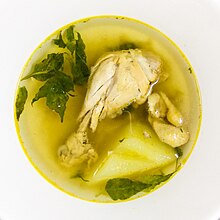
Frunzele fiecărei specii de Capsicum sunt comestibile. Deși aproape toate celelalte culturi de Solanacee au toxine în frunze, ardeii iute nu au. </link>[ <span title="This claim needs references to reliable sources. (April 2016)">citare necesară</span> ] Frunzele, care sunt ușor amare și nici pe departe la fel de fierbinți ca fructele, sunt gătite ca verdeață în bucătăria filipineză, unde sunt numite dahon ng sili (literal „frunze de ardei iute”). Sunt folosite în supa de pui tinola . [38] În bucătăria coreeană, frunzele pot fi folosite în kimchi . [39] În bucătăria japoneză, frunzele sunt gătite ca verdețuri și, de asemenea, sunt gătite în stil tsukudani pentru conservare.xx xxx x x x xxxxxxxx xxx xxxxx.xx xxxxx xxxxxxxxxx xxxxxxxxx x xxxxxxxxxx.x xxxxxxxxxx xxxxxxxxxxxxx x x xx xxxxxx x xxx xxxxxxxxx xxxxxxxxx xxxxxxx xxxx xxxxxx xxxx xxxxx xxxxx xxxxxx xxxx xxxx xxxxxx xxxxx xxxxx xxxxxxx xxxx xxxxx xxxxxxx xxx x x x xxxxxxxx xxx xxxxx.xx xxxxx xxxxxxxxxx xxxxxxxxx x xxxxxxxxxx.x xxxxxxxxxx xxxxxxxxxxxxx x x xx xxxxxx x xxx xxxxxxxxx xxxxxxxxx xxxxxxx xxxx xxxxxx xxxx xxxxx xxxxx xxxxxx xxxx xxxx xxxxxx xxxxx xxxxx xxxxxxx xxxx xxxxx xxxxxxx xxx x x x xxxxxxxx xxx
Multe mâncăruri mexicane, inclusiv variații ale chiles rellenos, folosesc chili-ul întreg. Ardeii iute întregi uscati pot fi reconstituiți înainte de măcinare până la o pastă. Chipotle este jalapeño afumat, uscat și copt. În statele din nordul Mexicului Sinaloa și Sonora, ardeii chiltepin (un ardei sălbatic) sunt folosiți în brânzeturi și supe pentru a adăuga picante la feluri de mâncare. În sudul Mexicului, sosul mole este făcut cu ardei iute uscat, cum ar fi ardei ancho și chipotle. Chiles sunt folosite în salsa . Gospodăriile mexicane cultivă de obicei plante de chile pentru a le folosi la gătit.xx xxx x x x xxxxxxxx xxx xxxxx.xx xxxxx xxxxxxxxxx xxxxxxxxx x xxxxxxxxxx.x xxxxxxxxxx xxxxxxxxxxxxx x x xx xxxxxx x xxx xxxxxxxxx xxxxxxxxx xxxxxxx xxxx xxxxxx xxxx xxxxx xxxxx xxxxxx xxxx xxxx xxxxxx xxxxx xxxxx xxxxxxx xxxx xxxxx xxxxxxx xxx x x x xxxxxxxx xxx xxxxx.xx xxxxx xxxxxxxxxx xxxxxxxxx x xxxxxxxxxx.x xxxxxxxxxx xxxxxxxxxxxxx x x xx xxxxxx x xxx xxxxxxxxx xxxxxxxxx xxxxxxx xxxx xxxxxx xxxx xxxxx xxxxx xxxxxx xxxx xxxx xxxxxx xxxxx xxxxx xxxxxxx xxxx xxxxx xxxxxxx xxx x x x xxxxxxxx xxx
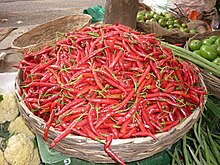
În India, majoritatea gospodăriilor păstrează întotdeauna la îndemână un stoc de ardei iute iute și ii folosesc pentru a aroma majoritatea curry-urilor și a mâncărurilor uscate.xx xxx x x x xxxxxxxx xxx xxxxx.xx xxxxx xxxxxxxxxx xxxxxxxxx x xxxxxxxxxx.x xxxxxxxxxx xxxxxxxxxxxxx x x xx xxxxxx x xxx xxxxxxxxx xxxxxxxxx xxxxxxx xxxx xxxxxx xxxx xxxxx xxxxx xxxxxx xxxx xxxx xxxxxx xxxxx xxxxx xxxxxxx xxxx xxxxx xxxxxxx xxx x x x xxxxxxxx xxx xxxxx.xx xxxxx xxxxxxxxxx xxxxxxxxx x xxxxxxxxxx.x xxxxxxxxxx xxxxxxxxxxxxx x x xx xxxxxx x xxx xxxxxxxxx xxxxxxxxx xxxxxxx xxxx xxxxxx xxxx xxxxx xxxxx xxxxxx xxxx xxxx xxxxxx xxxxx xxxxx xxxxxxx xxxx xxxxx xxxxxxx xxx x x x xxxxxxxx xxx
Chili este un fruct de bază în Bhutan . Bhutanezii numesc această cultură ema (în Dzongkha) sau solo (în Sharchop). Rețeta ema datshi este făcută în întregime din chili amestecat cu brânză locală.xx xxx x x x xxxxxxxx xxx xxxxx.xx xxxxx xxxxxxxxxx xxxxxxxxx x xxxxxxxxxx.x xxxxxxxxxx xxxxxxxxxxxxx x x xx xxxxxx x xxx xxxxxxxxx xxxxxxxxx xxxxxxx xxxx xxxxxx xxxx xxxxx xxxxx xxxxxx xxxx xxxx xxxxxx xxxxx xxxxx xxxxxxx xxxx xxxxx xxxxxxx xxx x x x xxxxxxxx xxx xxxxx.xx xxxxx xxxxxxxxxx xxxxxxxxx x xxxxxxxxxx.x xxxxxxxxxx xxxxxxxxxxxxx x x xx xxxxxx x xxx xxxxxxxxx xxxxxxxxx xxxxxxx xxxx xxxxxx xxxx xxxxx xxxxx xxxxxx xxxx xxxx xxxxxx xxxxx xxxxx xxxxxxx xxxx xxxxx xxxxxxx xxx x x x xxxxxxxx xxx
Ardeii iute sunt prezenți în multe bucătării. Unele feluri de mâncare notabile cu ardei iute includ sos arrabbiata, boia de ardei, chiles en nogada, pui jerk, mole poblano, nam phrik, 'nduja, sambal și som tam .xx xxx x x x xxxxxxxx xxx xxxxx.xx xxxxx xxxxxxxxxx xxxxxxxxx x xxxxxxxxxx.x xxxxxxxxxx xxxxxxxxxxxxx x x xx xxxxxx x xxx xxxxxxxxx xxxxxxxxx xxxxxxx xxxx xxxxxx xxxx xxxxx xxxxx xxxxxx xxxx xxxx xxxxxx xxxxx xxxxx xxxxxxx xxxx xxxxx xxxxxxx xxx x x x xxxxxxxx xxx xxxxx.xx xxxxx xxxxxxxxxx xxxxxxxxx x xxxxxxxxxx.x xxxxxxxxxx xxxxxxxxxxxxx x x xx xxxxxx x xxx xxxxxxxxx xxxxxxxxx xxxxxxx xxxx xxxxxx xxxx xxxxx xxxxx xxxxxx xxxx xxxx xxxxxx xxxxx xxxxx xxxxxxx xxxx xxxxx xxxxxxx xxx x x x xxxxxxxx xxx
Ardeii iute proaspeți sau uscati sunt adesea folosiți pentru a face sos iute, un condiment lichid - de obicei îmbuteliat atunci când este disponibil în comerț - care adaugă condiment la alte feluri de mâncare. Sosurile fierbinți se găsesc în multe bucătării, inclusiv harissa din Africa de Nord, uleiul de chili din China (cunoscut sub numele de rāyu în Japonia) și sriracha din Thailanda. Ardeii iute uscat sunt, de asemenea, folosiți pentru a infuza ulei de gătit.xx xxx x x x xxxxxxxx xxx xxxxx.xx xxxxx xxxxxxxxxx xxxxxxxxx x xxxxxxxxxx.x xxxxxxxxxx xxxxxxxxxxxxx x x xx xxxxxx x xxx xxxxxxxxx xxxxxxxxx xxxxxxx xxxx xxxxxx xxxx xxxxx xxxxx xxxxxx xxxx xxxx xxxxxx xxxxx xxxxx xxxxxxx xxxx xxxxx xxxxxxx xxx x x x xxxxxxxx xxx xxxxx.xx xxxxx xxxxxxxxxx xxxxxxxxx x xxxxxxxxxx.x xxxxxxxxxx xxxxxxxxxxxxx x x xx xxxxxx x xxx xxxxxxxxx xxxxxxxxx xxxxxxx xxxx xxxxxx xxxx xxxxx xxxxx xxxxxx xxxx xxxx xxxxxx xxxxx xxxxx xxxxxxx xxxx xxxxx xxxxxxx xxx x x x xxxxxxxx xxx
Plante ornamentale
Contrastul de culoare și aspect face ca plantele de chili să fie interesante pentru unii ca plantă de grădină pur decorativă.xx xxx x x x xxxxxxxx xxx xxxxx.xx xxxxx xxxxxxxxxx xxxxxxxxx x xxxxxxxxxx.x xxxxxxxxxx xxxxxxxxxxxxx x x xx xxxxxx x xxx xxxxxxxxx xxxxxxxxx xxxxxxx xxxx xxxxxx xxxx xxxxx xxxxx xxxxxx xxxx xxxx xxxxxx xxxxx xxxxx xxxxxxx xxxx xxxxx xxxxxxx xxx x x x xxxxxxxx xxx xxxxx.xx xxxxx xxxxxxxxxx xxxxxxxxx x xxxxxxxxxx.x xxxxxxxxxx xxxxxxxxxxxxx x x xx xxxxxx x xxx xxxxxxxxx xxxxxxxxx xxxxxxx xxxx xxxxxx xxxx xxxxx xxxxx xxxxxx xxxx xxxx xxxxxx xxxxx xxxxx xxxxxxx xxxx xxxxx xxxxxxx xxx x x x xxxxxxxx xxx
- Piper negru perlat : fructe mici în formă de cireș și frunze de culoare maro închis până la negru
Piper perlat negru - Ardei negru maghiar: frunziș verde, evidențiat de vene și flori violete, fructe în formă de jalapeño [40]
- Ardeiul coroana episcopului, ardeiul gras de Crăciun: numit după forma sa distinctă cu trei fețe, asemănătoare cu o coroană roșie a episcopului sau cu un clopot roșu de Crăciun [41]xx xxx x x x xxxxxxxx xxx xxxxx.xx xxxxx xxxxxxxxxx xxxxxxxxx x xxxxxxxxxx.x xxxxxxxxxx xxxxxxxxxxxxx x x xx xxxxxx x xxx xxxxxxxxx xxxxxxxxx xxxxxxx xxxx xxxxxx xxxx xxxxx xxxxx xxxxxx xxxx xxxx xxxxxx xxxxx xxxxx xxxxxxx xxxx xxxxx xxxxxxx xxx x x x xxxxxxxx xxx xxxxx.xx xxxxx xxxxxxxxxx xxxxxxxxx x xxxxxxxxxx.x xxxxxxxxxx xxxxxxxxxxxxx x x xx xxxxxx x xxx xxxxxxxxx xxxxxxxxx xxxxxxx xxxx xxxxxx xxxx xxxxx xxxxx xxxxxx xxxx xxxx xxxxxx xxxxx xxxxx xxxxxxx xxxx xxxxx xxxxxxx xxx x x x xxxxxxxx xxx
Psihologie
Psihologul Paul Rozin sugerează că consumul de ardei iute este un exemplu de „risc constrâns”, cum ar fi mersul pe un roller coaster, în care se pot bucura de senzații extreme precum durerea și frica, deoarece oamenii știu că aceste senzații nu sunt de fapt dăunătoare. Această metodă permite oamenilor să experimenteze sentimente extreme fără niciun risc semnificativ de vătămare corporală. [42]xx xxx x x x xxxxxxxx xxx xxxxx.xx xxxxx xxxxxxxxxx xxxxxxxxx x xxxxxxxxxx.x xxxxxxxxxx xxxxxxxxxxxxx x x xx xxxxxx x xxx xxxxxxxxx xxxxxxxxx xxxxxxx xxxx xxxxxx xxxx xxxxx xxxxx xxxxxx xxxx xxxx xxxxxx xxxxx xxxxx xxxxxxx xxxx xxxxx xxxxxxx xxx x x x xxxxxxxx xxx xxxxx.xx xxxxx xxxxxxxxxx xxxxxxxxx x xxxxxxxxxx.x xxxxxxxxxx xxxxxxxxxxxxx x x xx xxxxxx x xxx xxxxxxxxx xxxxxxxxx xxxxxxx xxxx xxxxxx xxxx xxxxx xxxxx xxxxxx xxxx xxxx xxxxxx xxxxx xxxxx xxxxxxx xxxx xxxxx xxxxxxx xxx x x x xxxxxxxx xxx
Utilizare topică și cercetare în sănătate
Capsaicina, substanța chimică înțepătoare din ardeiul iute, este folosită ca analgezic în unguente topice, spray-uri nazale și plasturi dermici pentru a calma durerea. [43] O analiză din 2022 a cercetărilor preliminare a indicat că consumul regulat de ardei iute a fost asociat cu dovezi slabe pentru un risc mai scăzut de deces din cauza bolilor cardiovasculare și a cancerului . [44]xx xxx x x x xxxxxxxx xxx xxxxx.xx xxxxx xxxxxxxxxx xxxxxxxxx x xxxxxxxxxx.x xxxxxxxxxx xxxxxxxxxxxxx x x xx xxxxxx x xxx xxxxxxxxx xxxxxxxxx xxxxxxx xxxx xxxxxx xxxx xxxxx xxxxx xxxxxx xxxx xxxx xxxxxx xxxxx xxxxx xxxxxxx xxxx xxxxx xxxxxxx xxx x x x xxxxxxxx xxx xxxxx.xx xxxxx xxxxxxxxxx xxxxxxxxx x xxxxxxxxxx.x xxxxxxxxxx xxxxxxxxxxxxx x x xx xxxxxx x xxx xxxxxxxxx xxxxxxxxx xxxxxxx xxxx xxxxxx xxxx xxxxx xxxxx xxxxxx xxxx xxxx xxxxxx xxxxx xxxxx xxxxxxx xxxx xxxxx xxxxxxx xxx x x x xxxxxxxx xxx
Iritanti chimici
Capsaicina extrasă din ardei iute este folosită în spray-uri cu piper și în unele formulări de gaz lacrimogen ca iritant chimic, pentru a fi folosite ca arme mai puțin letale pentru controlul persoanelor sau mulțimilor indisciplinate. [45] Astfel de produse au un potențial considerabil de utilizare greșită și pot provoca vătămări sau deces. [45]xx xxx x x x xxxxxxxx xxx xxxxx.xx xxxxx xxxxxxxxxx xxxxxxxxx x xxxxxxxxxx.x xxxxxxxxxx xxxxxxxxxxxxx x x xx xxxxxx x xxx xxxxxxxxx xxxxxxxxx xxxxxxx xxxx xxxxxx xxxx xxxxx xxxxx xxxxxx xxxx xxxx xxxxxx xxxxx xxxxx xxxxxxx xxxx xxxxx xxxxxxx xxx x x x xxxxxxxx xxx xxxxx.xx xxxxx xxxxxxxxxx xxxxxxxxx x xxxxxxxxxx.x xxxxxxxxxx xxxxxxxxxxxxx x x xx xxxxxx x xxx xxxxxxxxx xxxxxxxxx xxxxxxx xxxx xxxxxx xxxx xxxxx xxxxx xxxxxx xxxx xxxx xxxxxx xxxxx xxxxx xxxxxxx xxxx xxxxx xxxxxxx xxx x x x xxxxxxxx xxx
Apărarea culturilor
Conflictele dintre fermieri și elefanți au fost de multă vreme larg răspândite în țările africane și asiatice, unde elefanții distrug noaptea culturile, năvălesc în casele de cereale și uneori ucid oameni. Fermierii au descoperit că folosirea ardeiului iute este eficientă în apărarea culturilor împotriva elefanților. Elefantilor nu le place capsaicina. Deoarece elefanții au un sistem olfactiv și nazal mare și sensibil, mirosul de chili le provoacă disconfort și îi descurajează să se hrănească cu culturile. Plantand cateva randuri de fructe in jurul culturilor valoroase, fermierii creeaza o zona tampon prin care elefantii sunt reticenti sa treaca. În acest scop se folosesc și bombe de bălegar chili. Sunt cărămizi făcute din amestecul de bălegar și chili și sunt arse, creând un fum nociv care ține elefanții înfometați departe de câmpurile fermierilor. Acest lucru poate reduce confruntarea fizică periculoasă dintre oameni și elefanți. [46]xx xxx x x x xxxxxxxx xxx xxxxx.xx xxxxx xxxxxxxxxx xxxxxxxxx x xxxxxxxxxx.x xxxxxxxxxx xxxxxxxxxxxxx x x xx xxxxxx x xxx xxxxxxxxx xxxxxxxxx xxxxxxx xxxx xxxxxx xxxx xxxxx xxxxx xxxxxx xxxx xxxx xxxxxx xxxxx xxxxx xxxxxxx xxxx xxxxx xxxxxxx xxx x x x xxxxxxxx xxx xxxxx.xx xxxxx xxxxxxxxxx xxxxxxxxx x xxxxxxxxxx.x xxxxxxxxxx xxxxxxxxxxxxx x x xx xxxxxx x xxx xxxxxxxxx xxxxxxxxx xxxxxxx xxxx xxxxxx xxxx xxxxx xxxxx xxxxxx xxxx xxxx xxxxxx xxxxx xxxxx xxxxxxx xxxx xxxxx xxxxxxx xxx x x x xxxxxxxx xxx
Apărarea alimentară
Păsările nu au aceeași sensibilitate la capsaicină, deoarece vizează un anumit receptor al durerii la mamifere. Ardeii iute sunt consumați de păsările care trăiesc în zona naturală a ardeiului iute, contribuind posibil la dispersarea semințelor și la evoluția capsaicinei protectoare din ardei iute, deoarece o pasăre în zbor poate răspândi semințele mai departe de planta părinte după ce trec prin ea. sistemul digestiv decât orice mamifer care locuiește pe pământ sau în copac ar putea face acest lucru în aceleași circumstanțe, reducând astfel competiția pentru resurse. [47]xx xxx x x x xxxxxxxx xxx xxxxx.xx xxxxx xxxxxxxxxx xxxxxxxxx x xxxxxxxxxx.x xxxxxxxxxx xxxxxxxxxxxxx x x xx xxxxxx x xxx xxxxxxxxx xxxxxxxxx xxxxxxx xxxx xxxxxx xxxx xxxxx xxxxx xxxxxx xxxx xxxx xxxxxx xxxxx xxxxx xxxxxxx xxxx xxxxx xxxxxxx xxx x x x xxxxxxxx xxx xxxxx.xx xxxxx xxxxxxxxxx xxxxxxxxx x xxxxxxxxxx.x xxxxxxxxxx xxxxxxxxxxxxx x x xx xxxxxx x xxx xxxxxxxxx xxxxxxxxx xxxxxxx xxxx xxxxxx xxxx xxxxx xxxxx xxxxxx xxxx xxxx xxxxxx xxxxx xxxxx xxxxxxx xxxx xxxxx xxxxxxx xxx x x x xxxxxxxx xxx
Valoare nutritionala
Ardeii iute roșu sunt 88% apă, 9% carbohidrați, 2% proteine și 0,4% grăsimi (tabel). Într-o cantitate de referință de 100 de grame, ardeii iute furnizează 40 de calorii și sunt o sursă bogată de vitamina C și vitamina B 6 (tabel).xx xxx x x x xxxxxxxx xxx xxxxx.xx xxxxx xxxxxxxxxx xxxxxxxxx x xxxxxxxxxx.x xxxxxxxxxx xxxxxxxxxxxxx x x xx xxxxxx x xxx xxxxxxxxx xxxxxxxxx xxxxxxx xxxx xxxxxx xxxx xxxxx xxxxx xxxxxx xxxx xxxx xxxxxx xxxxx xxxxx xxxxxxx xxxx xxxxx xxxxxxx xxx x x x xxxxxxxx xxx xxxxx.xx xxxxx xxxxxxxxxx xxxxxxxxx x xxxxxxxxxx.x xxxxxxxxxx xxxxxxxxxxxxx x x xx xxxxxx x xxx xxxxxxxxx xxxxxxxxx xxxxxxx xxxx xxxxxx xxxx xxxxx xxxxx xxxxxx xxxx xxxx xxxxxx xxxxx xxxxx xxxxxxx xxxx xxxxx xxxxxxx xxx x x x xxxxxxxx xxx
Ortografie și utilizare
Cele trei ortografii principale sunt chili, chile și chilli, toate fiind recunoscute de dicționare.xx xxx x x x xxxxxxxx xxx xxxxx.xx xxxxx xxxxxxxxxx xxxxxxxxx x xxxxxxxxxx.x xxxxxxxxxx xxxxxxxxxxxxx x x xx xxxxxx x xxx xxxxxxxxx xxxxxxxxx xxxxxxx xxxx xxxxxx xxxx xxxxx xxxxx xxxxxx xxxx xxxx xxxxxx xxxxx xxxxx xxxxxxx xxxx xxxxx xxxxxxx xxx x x x xxxxxxxx xxx xxxxx.xx xxxxx xxxxxxxxxx xxxxxxxxx x xxxxxxxxxx.x xxxxxxxxxx xxxxxxxxxxxxx x x xx xxxxxx x xxx xxxxxxxxx xxxxxxxxx xxxxxxx xxxx xxxxxx xxxx xxxxx xxxxx xxxxxx xxxx xxxx xxxxxx xxxxx xxxxx xxxxxxx xxxx xxxxx xxxxxxx xxx x x x xxxxxxxx xxx
- Chili este folosit pe scară largă în engleza Statelor Unite [48] și opțional în Canada. [49] Cu toate acestea, este, de asemenea, folosit în mod obișnuit ca un nume scurt pentru chili con carne (literal „chili cu carne”), [48] dintre care majoritatea versiunilor sunt asezonate cu pudră de chili, care la rândul său se poate referi la ardei iute pur, uscat, măcinat, sau la un amestec care conține alte condimente.
- Chile este cea mai comună ortografie spaniolă în Mexic și în alte câteva țări din America Latină, [50] precum și în unele părți ale Statelor Unite [51] care se referă în mod specific la această plantă și fructele sale. În sud-vestul Statelor Unite (în special New Mexico), chile denotă, de asemenea, un sos gros, picant, fără oțet, făcut din acest fruct, disponibil în soiuri roșii și verzi și servit peste mâncarea locală, în timp ce chili denotă felul de mâncare din carne. Pluralul este chile sau chiles .
- Chilli a fost romanizarea originală a cuvântului în limba náhuatl pentru fruct ( chilli ) [52] și este ortografia britanică preferată conform Oxford English Dictionary, deși listează și chile și chili ca variante. [52] Chilli (și pluralul său chillies ) este cea mai comună ortografie în India, [53] Sri Lanka, [54] Australia, Malaezia, Noua Zeelandă, Pakistan, Singapore, Africa de Sud și, în mod variabil, în Canada.xx xxx x x x xxxxxxxx xxx xxxxx.xx xxxxx xxxxxxxxxx xxxxxxxxx x xxxxxxxxxx.x xxxxxxxxxx xxxxxxxxxxxxx x x xx xxxxxx x xxx xxxxxxxxx xxxxxxxxx xxxxxxx xxxx xxxxxx xxxx xxxxx xxxxx xxxxxx xxxx xxxx xxxxxx xxxxx xxxxx xxxxxxx xxxx xxxxx xxxxxxx xxx x x x xxxxxxxx xxx xxxxx.xx xxxxx xxxxxxxxxx xxxxxxxxx x xxxxxxxxxx.x xxxxxxxxxx xxxxxxxxxxxxx x x xx xxxxxx x xxx xxxxxxxxx xxxxxxxxx xxxxxxx xxxx xxxxxx xxxx xxxxx xxxxx xxxxxx xxxx xxxx xxxxxx xxxxx xxxxx xxxxxxx xxxx xxxxx xxxxxxx xxx x x x xxxxxxxx xxx
Numele plantei nu are legătură cu cel al Chile, [52] țara, care are o etimologie incertă, probabil legată de numele localităților. Anumite țări vorbitoare de spaniolă din America de Sud și Caraibe, inclusiv Chile, Columbia, Ecuador, Panama, Peru, Republica Dominicană, Venezuela și Puerto Rico, numesc ardeii ají, un cuvânt de origine taíno .xx xxx x x x xxxxxxxx xxx xxxxx.xx xxxxx xxxxxxxxxx xxxxxxxxx x xxxxxxxxxx.x xxxxxxxxxx xxxxxxxxxxxxx x x xx xxxxxx x xxx xxxxxxxxx xxxxxxxxx xxxxxxx xxxx xxxxxx xxxx xxxxx xxxxx xxxxxx xxxx xxxx xxxxxx xxxxx xxxxx xxxxxxx xxxx xxxxx xxxxxxx xxx x x x xxxxxxxx xxx xxxxx.xx xxxxx xxxxxxxxxx xxxxxxxxx x xxxxxxxxxx.x xxxxxxxxxx xxxxxxxxxxxxx x x xx xxxxxx x xxx xxxxxxxxx xxxxxxxxx xxxxxxx xxxx xxxxxx xxxx xxxxx xxxxx xxxxxx xxxx xxxx xxxxxx xxxxx xxxxx xxxxxxx xxxx xxxxx xxxxxxx xxx x x x xxxxxxxx xxx
Deși piper se referea inițial la genul Piper, nu la Capsicum, această din urmă utilizare este inclusă în dicționarele engleze, inclusiv în Oxford English Dictionary [55] și Merriam-Webster . [56] Cuvântul piper este, de asemenea, folosit în mod obișnuit în domeniul botanic și culinar în numele diferitelor tipuri de plante înțepătoare și fructele acestora. [55]xx xxx x x x xxxxxxxx xxx xxxxx.xx xxxxx xxxxxxxxxx xxxxxxxxx x xxxxxxxxxx.x xxxxxxxxxx xxxxxxxxxxxxx x x xx xxxxxx x xxx xxxxxxxxx xxxxxxxxx xxxxxxx xxxx xxxxxx xxxx xxxxx xxxxx xxxxxx xxxx xxxx xxxxxx xxxxx xxxxx xxxxxxx xxxx xxxxx xxxxxxx xxx x x x xxxxxxxx xxx xxxxx.xx xxxxx xxxxxxxxxx xxxxxxxxx x xxxxxxxxxx.x xxxxxxxxxx xxxxxxxxxxxxx x x xx xxxxxx x xxx xxxxxxxxx xxxxxxxxx xxxxxxx xxxx xxxxxx xxxx xxxxx xxxxx xxxxxx xxxx xxxx xxxxxx xxxxx xxxxx xxxxxxx xxxx xxxxx xxxxxxx xxx x x x xxxxxxxx xxx
Siguranță
Uleiul volatil din ardeiul picant poate provoca iritații ale pielii, necesitând spălarea mâinilor și îngrijire atunci când atingeți ochii sau orice părți sensibile ale corpului. [57] Consumul de ardei iute poate provoca dureri de stomac, hiperventilație, transpirație, vărsături și simptome care ar putea necesita spitalizare. </link>[ <span title="This claim needs references to reliable sources. (January 2024)">necesită citare</span> ]xx xxx x x x xxxxxxxx xxx xxxxx.xx xxxxx xxxxxxxxxx xxxxxxxxx x xxxxxxxxxx.x xxxxxxxxxx xxxxxxxxxxxxx x x xx xxxxxx x xxx xxxxxxxxx xxxxxxxxx xxxxxxx xxxx xxxxxx xxxx xxxxx xxxxx xxxxxx xxxx xxxx xxxxxx xxxxx xxxxx xxxxxxx xxxx xxxxx xxxxxxx xxx x x x xxxxxxxx xxx xxxxx.xx xxxxx xxxxxxxxxx xxxxxxxxx x xxxxxxxxxx.x xxxxxxxxxx xxxxxxxxxxxxx x x xx xxxxxx x xxx xxxxxxxxx xxxxxxxxx xxxxxxx xxxx xxxxxx xxxx xxxxx xxxxx xxxxxx xxxx xxxx xxxxxx xxxxx xxxxx xxxxxxx xxxx xxxxx xxxxxxx xxx x x x xxxxxxxx xxx
Galerie
- Ilustrație din enciclopedia agricolă japonezaSeikei Zusetsu(1804)
- Ardeiulhabanero
- Muguri și flori
- Ardei iute imaturi pe câmp
- Ardei iute copți pe câmp, Myanmar
- Soiul Black Pearl
- Ardei cubanelle
- Ardei iute copt cu seminte
- Ardei iute scotch bonet într-o piață din Caraibe
- Ardeii iute se usucă în Kathmandu, Nepal
- Îndepărtarea semințelor și a miedului din ardei iute uscat înSan Pedro Atocpan, Mexic
- Fulgi de ardei iute uscat si ardei iute proaspat
- Dip de ardei iute într-un restaurant tradițional din Amman, Iordania
- Ardeiiute thailandez uscat
- Ardei iute verzi
- Guntur chillise usucă la soare,Andhra Pradesh, India
- Chili uscat laImogiri, Yogyakarta, Indonezia
- New Mexicoardei iute uscate pe planta dinMesilla, New Mexico
- Vin de ardei iute din Virginia
- Ristrasde ardei iute care se usucă înArizona
- Floare albă de hârtie de chili noaptea
- Ardei Choricero
- Chili murat în India
- Ardei iute cultivat în Myanmar
- Fulgi de ardei iute uscate, Myanmar
- Ardei iute verzi din nordul Indiei. Sunt folosite ca condimente în multe feluri de mâncare indiene.
Vezi si
Referințe
Lectură în continuare
linkuri externe
- Culturi de plante: Ardei iute botanica, istorie și utilizări
- Institutul Chile Pepper de la Universitatea de Stat din New Mexico
- Capsicums: utilizări inovatoare ale unei culturi antice
- Chilli: La especia del Nuevo Mundo (Articol de la Germán Octavio López Riquelme despre biologie, nutriție, cultură și subiecte medicale. În spaniolă)
- Lista de ardei iute Lista soiurilor de ardei iute, ordonate în funcție de gradul de căldură în unități de căldură Scoville (SHU)
Format:Chili peppersFormat:Capsicum cultivars
| |||||||
[[Categorie:Bucătărie mexicană]][[Categorie:Mentenanță CS1: Nume multiple: lista autorilor]]

